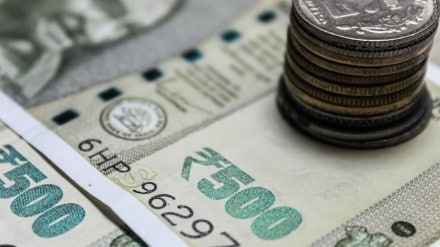By Mihika Sharma
The Indian rupee has depreciated 2.3% against the dollar in 2024, reaching a record low of 85.12 (as of December 23). However, at the same time, rupee volatility remains low compared to historical levels and other Asian currencies. High US yields and a strong dollar have primarily weighed on the rupee, while rangebound oil prices and RBI interventions have provided some support.
Dollar index at 2-year high putting pressure on global currencies
The 10-year US yield has risen 72 bps in 2024 to 4.59%, and the dollar index has strengthened 6.6% to around 108, its highest in two years. Expectations of inflationary policies under the Trump administration and hawkish guidance from the FOMC – signalling 50bps of rate cuts in 2025, down from 100bps earlier – have driven US yields and the dollar higher. This has led to capital outflows from emerging markets, putting pressure on their currencies, including the rupee.
FPI inflows into Indian markets decline in 2024
FPI net inflows into India totalled $20.7 billion in 2024 (as of December 23), lower than $28.7 billion in 2023, mainly due to weak equity inflows ($648 million in 2024 vs $20.7 billion in 2023). This decline was driven by investor reallocations to the US and China, high domestic valuations and muted Q2FY25 corporate results. However, debt inflows rose to around USD 19 billion in 2024 from USD 7.3 billion in 2023, driven by India’s inclusion in global bond indices.
Weak yuan and widening goods trade deficit add to pressure on rupee
The yuan has depreciated 2.8% against the dollar in 2024, affecting other Asian currencies, including the rupee. China’s ongoing slowdown, driven by its property sector troubles, and tariff threats under Trump 2.0, is resulting in yuan’s weakness. India’s goods trade deficit widened to $202.6 billion in Apr-Nov FY25 from $171.1 in the same period a year ago, mainly due to higher gold imports. However, net services exports rose 15% YoY during this period to $119.5 billion, partially offsetting the widening trade deficit.
Rangebound oil prices & RBI interventions provide some support
Barring brief periods, Brent crude oil prices have largely remained rangebound in 2024, trading between $69.7 and 81.1 per barrel over the past three months. Increased non-OPEC supply and weak Chinese demand have kept prices stable, offering some support to the rupee.
RBI interventions have also helped prevent a sharp fall in the rupee. India’s forex reserves have declined by $52 billion since September to around $653 billion (as of December 13) due to these interventions. However, the reserves remain at comfortable levels. RBI has also increased its interventions in the forward market, with its net outstanding forward sales position at $49.2 billion (as of October 2024), compared to a net forward purchase position of $2.2 billion as of December 2023.
Looking ahead, we expect the rupee to trade between 84.5 and 85.5 in the near term. While high US yields and a strong dollar are likely to remain key factors weighing on the rupee, RBI interventions should help contain volatility in USD/INR.
(About The Author: Mihika Sharma is an Associate Economist at CareEdge Ratings.)
(Disclaimer: Views, recommendations, and opinions expressed are personal and do not reflect the official position or policy of Financial Express.com. Readers are advised to consult qualified financial advisors before making any investment decisions. Reproducing this content without permission is prohibited.)
